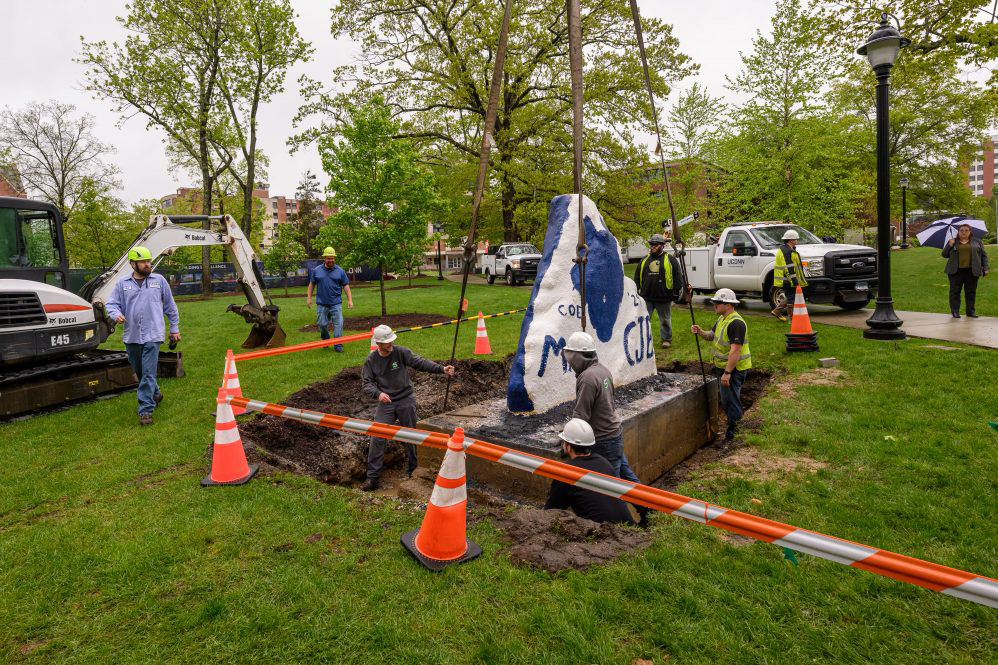This essay recently won an award in the Connecticut Foundation for Open Government’s First Amendment essay contest. It was written before the University of Connecticut relocated the spirit rock.
For centuries, the right to debate and protest has been a cornerstone of American identity. From the American Revolution to abolitionism to the Vietnam War, Americans have consistently sought to share their opinions in both moderated and unmoderated settings.
In the wake of intense conflict in the Middle East, students at the University of Connecticut have begun using the spirit rock to voice their support for both Israel and Palestine. Although the painting of the rock has caused heightened tension within the university community, leading to debate about relocating or removing it, it more importantly serves as a forum for students to express their thoughts and ideas.
As a result, it is imperative that no change in location is made regarding the spirit rock to protect the First Amendment rights of the university’s students.
The efforts of administrators to mitigate controversy and political tensions are intended to maintain a standard of political decency; however, the very conservation of these standards proves unconstitutional. In the case of Papish v. Board of Curators at the University of Missouri, the court ruled that, “the mere dissemination of ideas — no matter how offensive to good taste — on a state university campus may not be shut off in the name alone of ‘conventions of decency.’”
Trying to promote a culture of constant harmony among campus students by removing the rock, while appearing an idyllic solution, prevents the expression of students’ individual ideas. Conflict and disagreement are natural precursors to progress and cannot be avoided if the university supports building a generation of changemakers. Therefore, the removal of the rock in an effort to promote unity would undermine the First Amendment and inhibit genuine change.
Similarly, in Snyder v. Phelps, the court ruled that speech on public issues warrants protection under the First Amendment, stating that “debate on public issues should be uninhibited, robust, and wide-open.” Removing or simply moving the rock is an active attempt by the university administration to minimize debate on world affairs, a direct violation of the ruling. In addition to taking away students’ ability to voice their ideas, these actions would limit interactions between the student body and current issues.
Living thousands of miles from the Levant, it is all too easy for UConn students to turn a blind eye to the ongoing violence in the region. Students passing by the rock on their way to class every day see the paintings and are encouraged to share their own opinions or research the conflict, increasing awareness and education on global issues. To take away the rock would be taking away both students’ source of self-expression and their stimulant to learn. With the rock gone, students will no longer have any reminder to learn about or discuss the conflict, and the university will have successfully stifled nuanced and educated discussion altogether.
UConn’s spirit rock is ultimately a representation of the passions of its students, and UConn should be proud of its students’ global interests. To simply relocate or remove the rock, removing the medium with which students are able to express their views, represents an organized suppression of free speech and fear of critical discussion by the university.
As youth around the country grow up in a politically-charged world, it becomes more and more critical for their educators to foster independent, critical thinking about the world around them. In maintaining the location of the spirit rock, UConn will not only be protecting the freedom of speech of its students, but also allowing them to become passionate, well-informed, global citizens.
Pranati Sathyagal is a junior at Ridgefield High School.

